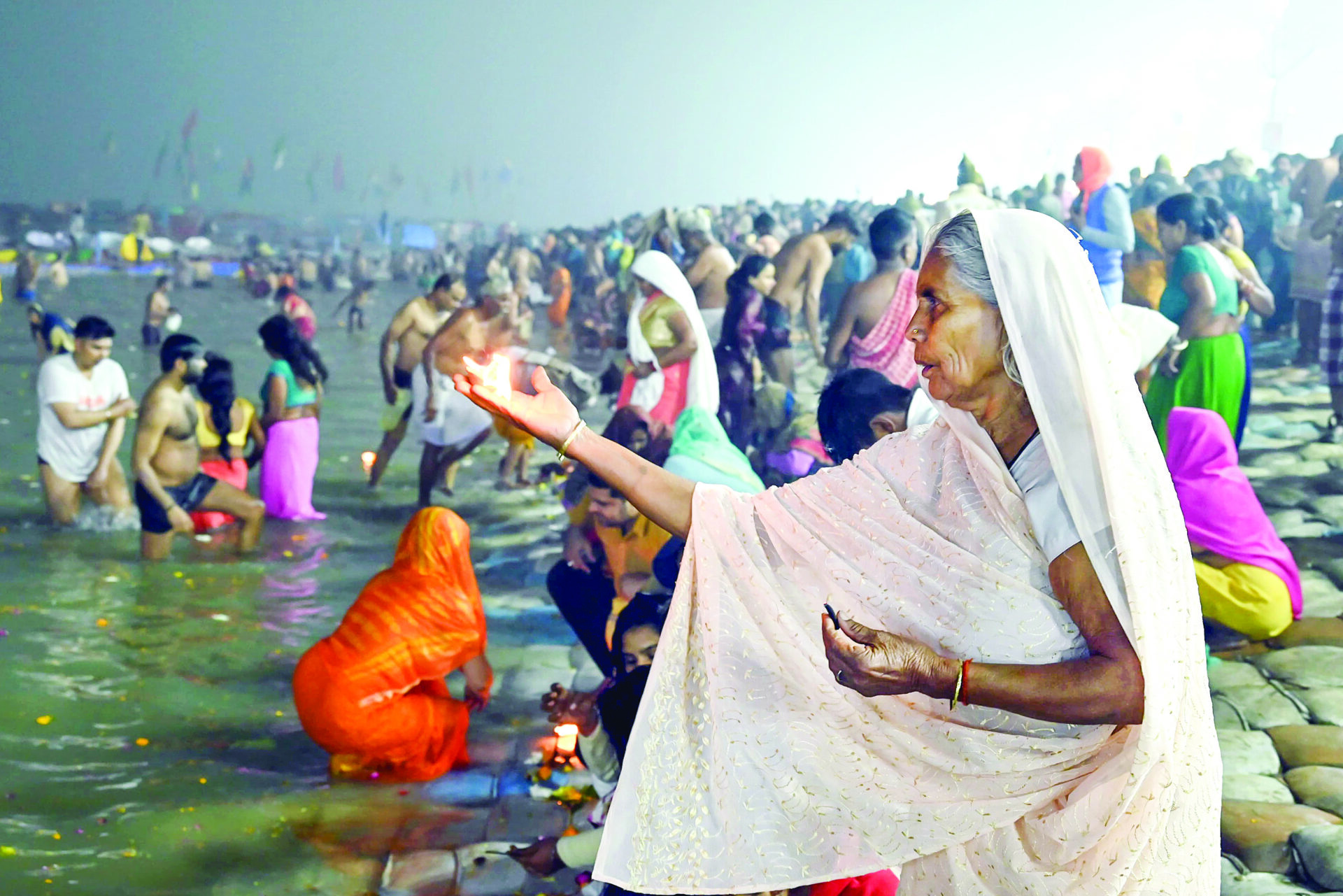This Mela is considered as a penance to purify oneself and various limbs of yoga are reflected in the prescribed practices and austerities recommended as Kalpavas during this period.
Yoga is a union of the human body, mind, and inner energy with the all-pervading cosmic energy. It is in this context that Swami Sivananda describes yoga as a union with all. In the same vein, Swami Vivekananda describes yoga as a fine state of perception in which one can perceive all the different mental states. The earliest recorded written versions relating to yoga are found in the aphorisms (Yoga sutras) of Patanjali (200 BC), a saint who is regarded as the first authority on this discipline. Patanjali explained the eight steps of yoga or Ashtanga yoga. The eight steps of Ashtanga yoga are (1) Yama, (2) Niyama, (3) Asana, (4) Pranayama, (5) Pratyahara, (6) Dharana, (7) Dhyana, and (8) Samadhi. The first four steps are often called Bahirmukhi yoga (or outward yoga) and the last four are Antarmukhi yoga (or inward yoga).
Followers of Sanatan Dharma organize Kumbh Mela, which is celebrated four times in 12 years every 4 years, with the largest one, Maha Kumbh, celebrated once in 144 years. Millions of people gather in this Mela when it is organized and many yogis, sanyasis, and sadhus participate with fervor. Is the Kumbh Mela related in some way to the practice of yoga?
Kumbh Mela can be seen as a “boot camp” for yogis. Records of this pilgrimage can be traced back to Rig Veda. In the Mahabharat also this pilgrimage is mentioned to atone for past mistakes (prayaschita). This Mela is considered as a penance to purify oneself and various limbs of yoga are reflected in the prescribed practices and austerities recommended as Kalpavas during this period. Kalpavas begins on Ekadashi of the full moon in the Paush month. It continues up to Maghi Ekadashi. It is during this period a Sadhak must follow 21 rules in thoughts, words, and actions. These 21 rules correspond to various limbs of yoga mentioned in Ashtanga yoga and are presented below with corresponding practice in yoga:
Speaking the truth (a Yama of yoga as Satya which entails being honest as far as possible in one’s thoughts, words, and actions).
Following nonviolence (a Yama of yoga as Ahimsa which avoids purposeful injury to oneself or others in the present or with the potential to harm in the future).
Avoiding sexual relationships (a Yama of yoga as Brahmacharya which entails not overdoing sensory pursuits and rising above the consciousness of sheer senses).
Paying tribute to one’s ancestors by performing charity (a Yama in yoga as Aparigraha which entails setting limits to one’s needs and drawing the limit to one’s wants).
Giving charity to the needy as per one’s capacity (a Yama in yoga as Aparigraha which entails setting limits to one’s needs and drawing the limit to one’s wants).
Not desiring what other has (a Yama in yoga as Asteya which entails non-stealing).
Rising before sunrise (a Niyama of yoga as Tapas which entails self-discipline to purify oneself).
Eating only once a day and sleeping on the ground closer to Mother Earth (a Niyama of yoga as Tapas which entails self-discipline to purify oneself).
Participating in Satsang and reflecting on it (a Niyama as Swadhyaya or self-study).
Taking a bath thrice a day (a Niyama of yoga as Shaucham part of which entails outward cleanliness).
Observing Shetra Sanyas or non-violation of a reserved space (a Niyama of yoga as Shaucham part of which entails outward cleanliness).
Avoiding criticism and letting things go (a Niyama of yoga as Shaucham part of which entails inward cleanliness).
Avoiding anger and envy (a Niyama of yoga as Shaucham part of which entails inward cleanliness).
Remembering the name of Almighty in everyday chores (a Niyama as Ishwar Pranidhana or giving rights of outcomes of one’s actions to a Higher Power).
Being content with what one has (a Niyama as Santosha which entails being completely contended with the present without having any regrets about the past or worries about the future).
Performing daily physical activity (Asanas in yoga or low-impact poses).
Regulating breathing through exercises (Pranayama in yoga or breath regulation)
Reducing indulgence in the materialistic world (Pratyahara of yoga or withdrawal of the senses from their objects).
Observing “Trikal Sandhya” (Dharana of yoga which entails holding the mind at certain points).
Understanding the bad actions of others and always reasoning before concluding (Dhyana of yoga or meditation).
Feeling the same way for all living beings (Samadhi of yoga where “Sam” means equal or together and “Adhi” means the primordial state).
These 21 principles, if applied throughout Kumbh Mela can help develop healthy spiritual habits and are worth pursuing by everyone.
* Dr Manoj Sharma is a Professor and Chair of the Department of Social and Behavioral Health at the University of Nevada, Las Vegas, USA. He is an avid practitioner of Kundalini Yoga.

